The allure of becoming your own boss and carving out an entrepreneurial path is undeniably appealing. In today’s digital age, e-commerce platforms like Amazon have allowed countless individuals to transform their passions into profitable ventures.
However, before embarking on the journey of becoming an Amazon seller, it is essential to understand the financial landscape. Therefore, a detailed breakdown of Amazon selling fees is a critical factor that significantly impacts your profitability.
The Amazon Selling Model: an Overview
Consider a bustling marketplace teeming with millions of potential customers. That’s essentially what Amazon offers—a platform where you, the seller, can connect with a vast audience eager to purchase your products.
Amazon acts as the intermediary, providing the infrastructure, logistics, and customer base for a fee.
Here are the details of different models:
Fulfillment by Amazon (FBA)
Fulfillment by Amazon (FBA) takes the marketplace model a step further by offering comprehensive fulfillment services. With FBA, sellers send their inventory to Amazon’s fulfillment centers, and Amazon takes care of storage, packaging, shipping, and customer service.
Key benefits include:
- Prime Eligibility: Products fulfilled by Amazon are eligible for Amazon Prime, which can boost sales due to faster shipping options.
- Customer Service: Amazon handles returns and customer inquiries, saving sellers time and resources.
- Storage and Shipping: Amazon’s logistics network ensures efficient storage, packaging, and shipping of products.
Merchant Fulfilled Network (MFN)
The Merchant Fulfilled Network (MFN) is another option where sellers list products on Amazon but handle storage, packaging, and shipping themselves. This model suits sellers who want to maintain control over their logistics and may have unique packaging or shipping requirements.
Advantages include:
- Control: Sellers have complete control over their inventory and fulfillment process.
- Cost Savings: Potential savings on fulfillment fees compared to FBA.
By understanding and selecting the right model for your needs in the above mentioned models, you can maximize your reach, optimize operations, and increase sales on one of the world’s largest online marketplaces.
Impact of Fees on Seller Profitability
Amazon selling fees function like a silent partner in your business. They play a crucial role in maintaining the smooth operation of your online store and reducing your profit margins.
Understanding these fees is essential for setting competitive prices and ensuring the sustainability of your business.
Here’s how these fees can impact your bottom line:
- Operational Costs: Fees contribute to the infrastructure and logistics that keep your store running efficiently.
- Profit Margins: They reduce the overall profit from each sale, affecting your pricing strategy.
- Variable Factors: Fees can vary based on product category, selling plan, and fulfillment method.
- Sustainability: Managing these costs is crucial to maintaining a profitable and sustainable business.
This is just the first step in your Amazon seller journey. In the upcoming sections, we’ll delve deeper into the specific types of Amazon selling fees, equipping you with the knowledge to make informed decisions and maximize your profitability on this dynamic platform.
Also Read: Difference Between a Consignor and a Consignee: Definitions and Meanings
Amazon Selling Fees Explained
Now that we’ve grasped Amazon’s fundamental selling models let’s get into the nitty-gritty—the fees.
Consider these fees as an investment in your Amazon business venture. While they might seem daunting initially, understanding them empowers you to make informed decisions and optimize your profit margins.
1. Subscription Fees: Choosing Your Seller Path Wisely
Amazon offers two main selling plans: Individual and Professional. The Individual plan is perfect for sellers with limited inventory or those just starting. There’s no monthly subscription fee, but you’ll pay a per-item fee for each sale you make. This can quickly add up if your sales volume picks up.
On the other hand, the Professional plan is ideal for those serious about scaling their business. You unlock a treasure trove of benefits for a monthly subscription fee: bulk product uploading, access to detailed sales reports, and competitive pricing tools. Think of it as a VIP membership that empowers you to manage your inventory efficiently and make data-driven decisions.
2. Referral Fees: A Commission on Every Sale
Imagine a commission-based salesperson working tirelessly to connect you with eager customers. That’s how referral fees function. For every sale you make, Amazon charges you a referral fee, a percentage of the total selling price. These fees vary depending on the product category you’re selling in.
For instance, electronics typically have a lower referral fee than luxury items. Knowing your specific category’s referral fee allows you to factor it into your pricing strategy accurately. A quick visit to Seller Central will equip you with the exact referral fee percentages for your chosen product categories.
3. Closing Fees
Think of closing fees as the final handshake after a successful sale. These fees are a fixed amount charged per item sold and can vary based on the product’s price range and the fulfillment channel you choose (more on fulfillment channels later).
While closing fees seem small, they can add up over time. Factoring them into your pricing strategy ensures you maintain healthy profit margins.
4. Navigating through FBA, Easy Ship, and Self-Fulfillment
When it comes to getting your products to your customers, Amazon offers you a variety of fulfillment options, each with its associated shipping fees.
Fulfillment by Amazon (FBA) allows you to store your inventory in Amazon’s warehouses. For a fee, Amazon handles picking, packing, and shipping your orders. Easy Ship is a program where Amazon partners with regional carriers to pick up your products from a designated location and deliver them to customers.
Finally, with Self-Fulfillment, you handle the entire shipping process yourself. This can be cost-effective for high-value or bulky items but requires significant logistical planning.
Leverage Amazon FBA Shipments with Intoglo
Intoglo makes your FBA experience seamless and efficient. Here’s how Intoglo can enhance your Amazon FBA shipments:
- Dedicated In-House Amazon Experts
- Amazon Special Trucking Partners in the USA
- Palletization and Stuffing
With Intoglo, your FBA shipments are handled by experts who prioritize efficiency, reliability, and compliance. Our comprehensive services ensure that your products reach Amazon warehouses swiftly and securely, allowing you to focus on growing your business and satisfying your customers.
Choose Intoglo for your Amazon FBA shipments and experience seamless logistics support tailored to your needs.
5. Unveiling the FBA Cost Structure: Storage, Fulfillment, and More
If you choose the FBA route, you should consider extra fees in addition to the core referral and closing fees. Storage fees are charged monthly based on the space your inventory occupies in Amazon’s warehouses. Fulfillment fees cover Amazon’s picking, packing, and shipping processes. There might also be removal order fees if you get some of your inventory back from Amazon’s fulfillment centers.
Understanding these FBA-specific fees allows you to accurately calculate the total cost of using Amazon’s fulfillment services and determine if it aligns with your business model.
6. Miscellaneous Fees
While the core fees discussed above form the backbone of the Amazon seller fee structure, there are a few miscellaneous charges to be aware of.
Refund administration fees are applicable when you process a customer refund. High-volume listing fees might come into play if you have a massive inventory. Other category-specific fees might also exist, so staying informed through Seller Central is crucial.
Understanding the various Amazon selling fees can help you make informed decisions about your pricing strategy, fulfillment choices, and overall business model.
In the next section, we’ll explore some strategies to help you navigate the fee landscape and maximize your profitability on Amazon.
Cost Estimation and Profitability: Strategies for Amazon Sellers
Now that you know about Amazon selling fees, let’s explore strategies for maximizing profitability on this dynamic platform.
1. Unveiling the Profitability with Amazon’s Revenue Calculator
Amazon’s Seller Central offers a handy Revenue Calculator tool. This calculator lets you estimate your profits by determining product cost, selling price, and various Amazon fees.
Simply input your product details, and the calculator will provide a breakdown of estimated revenue and profitability. While not a guaranteed prediction, this information is valuable for setting competitive prices and understanding your profit margins.
2. The Profit Equation: Balancing Fees and Revenue
Profit is the difference between your revenue (selling price) and total costs (product cost + Amazon fees). When calculating profit, remember to factor in referral fees, closing fees, and shipping costs based on your chosen fulfillment method.
Let’s say you sell a product for $20. With a 10% referral fee, $2 goes to Amazon. If the closing fee is $1.50 and you use FBA with a $3 fulfillment fee, your total cost is $6.50. This leaves you with a profit of $13.50 per sale.
Hence, you can ensure healthy profit margins by constantly monitoring and adjusting your pricing strategy based on these fee structures.
3. FBA vs. Easy Ship vs. Self-Fulfillment
The fulfillment method you choose significantly impacts your bottom line.
- FBA offers convenience with Amazon handling storage and shipping, but it comes with storage and fulfillment fees.
- Easy Ship might be a cost-effective alternative for some products, but it lacks the control and efficiency of FBA.
- Self-fulfillment can be the most cost-effective option for high-value or bulky items but requires significant logistical planning.
The key is to compare the fees associated with each option and choose the one that best aligns with your product type, sales volume, and profit goals.
4. Avoiding Storage Fee Surprises
Nobody likes unexpected charges, especially when it comes to storage fees. By accurately forecasting demand and maintaining optimal inventory levels, you can minimize the time your products occupy space in Amazon’s warehouses, reducing storage fees.
Utilizing Amazon’s inventory management tools and sales data can help you predict what sells and when allowing you to order just the right amount of stock to meet customer demand without incurring unnecessary storage costs.
By understanding Amazon’s selling fees, using the revenue calculator, and implementing smart inventory management practices, you can navigate the fee landscape and unlock long-term profitability. Now, let’s learn about category-specific referral fees.
Category-Specific Referral Fees
Now that we’ve explored the different types of Amazon selling fees, let’s learn about a crucial element – referral fees. Remember, these fees are essentially a commission paid to Amazon for every sale you make.
Understanding how they vary by category empowers you to set competitive prices and maintain healthy profit margins.
1. Referral Fees Across Popular Categories:
- Automotive Parts & Accessories, Baby Products, Books & Fashion:
These categories typically fall within a sweet spot, with referral fees ranging from 8% to 15% of the total selling price. This makes them attractive options for sellers, especially those with high-volume sales.
2. Fee Variations Within Categories
While most categories have a standard referral fee percentage, variations can be based on the specific item’s price.
For instance, within the “Jewelry” category, a diamond necklace might have a higher referral fee (around 20%) compared to a pair of fashion earrings (around 15%).
Similarly, some bulky items within the “Furniture” category might have a slightly lower referral fee on the portion of the sales price exceeding a certain amount (often $200) to account for the additional handling costs.
By understanding referral fee structures and their variations, you can make informed decisions about product selection, pricing strategies, and overall business success on the Amazon marketplace.
Stay tuned for the concluding section, where we’ll explore additional resources and tips to help you confidently navigate through Amazon selling fees.
Also Read: Freight Forwarding Services in Thane East and West
Calculating Additional Amazon Fees
While we’ve covered the core Amazon selling fees, there are a few additional charges, especially if you plan to utilize Amazon’s fulfillment services.
Consider these fees as additional investments that can streamline your operations but require careful consideration for optimal profitability.
1. FBA Inventory Placement Service: Streamlining Your Storage Journey
Imagine a team of experts meticulously placing your products within Amazon’s warehouses for maximum efficiency. That’s what the FBA Inventory Placement Service offers.
For a fee, Amazon analyzes your product dimensions, weight, and sales history to determine the optimal storage location within its fulfillment centers. Minimizing pick-travel times for faster order fulfillment can reduce your long-term storage fees.
However, this service is optional, and the decision to utilize it depends on your budget, product type, and sales volume.
You sell, we ship! Deliver to Amazon warehouses for FBA shipments with Intoglo.
2. FBA Prep Service Fee
Don’t have the time or resources to package your products according to Amazon’s fulfillment guidelines? The FBA Prep Service can be of great help here.
Amazon will handle your products’ labeling, packaging, and boxing for a fee per unit before they enter their warehouses. This can be a time-saver for busy sellers, but again, factor in the cost to your overall profit margin.
3. Unique Fees: Unveiling the Hidden Charges
Beyond the core fees, there can be some category-specific charges to remember.
For instance, selling products containing lithium batteries might incur additional handling fees due to safety regulations.
Similarly, you might encounter high-volume listing fees if you have a massive inventory with many listings.
The key is to stay informed through Seller Central and carefully research any category-specific fees that might apply to your products.
By understanding these additional fees, you can make informed decisions about using Amazon’s fulfillment services and ensure your pricing strategy accurately reflects your total costs.
In the final section of this guide, we’ll explore some valuable resources and offer concluding remarks to empower you on your journey as a successful Amazon seller.
FBA vs. FBM: The Cost Contenders in the Amazon Arena
Now that you know about various Amazon selling fees, let’s enter the great FBA vs. FBM debate. Understanding the cost implications of each fulfillment method empowers you to choose the most cost-effective option for your business.
Here’s a table comparing the key aspects of Fulfillment by Amazon (FBA) and Fulfillment by Merchant (FBM):
| Aspect | Fulfillment by Amazon (FBA) | Fulfillment by Merchant (FBM) |
| Storage & Shipping | Amazon stores, packs, ships & handles CS | Seller manages storage, packing, shipping & CS |
| Prime Eligibility | Yes (faster shipping) | No (potentially slower shipping) |
| Fees | Storage fees, fulfillment fees, long-term storage fees | Generally, there are lower fees, but the seller pays storage, packing, shipping |
| Customer Service | Amazon handles CS & returns | Seller manages CS & returns |
| Inventory Management | Amazon manages inventory & restocking | Seller manages inventory & restocking |
| Control | Less control over packaging & shipping | Full control over packaging, branding & shipping |
| Time Investment | Less time on logistics & CS | More time on logistics, shipping & CS |
| Sales Boost | Increased sales potential with Prime & faster shipping | May have lower sales potential without Prime |
Scenario Comparison for Cost-Efficiency
| Scenario | FBA | FBM |
| Low Sales Volume | Higher costs due to storage & fulfillment fees | More cost-effective (if storage & shipping costs are minimal) |
| High Sales Volume | More cost-effective with economies of scale | May struggle with scalability & increased shipping costs |
| Seasonal Demand | Risk of high long-term storage fees | Flexible storage & shipping based on seasonal demand |
| Heavy/Bulky Items | High fulfillment fees due to weight & size | Potentially lower costs if shipping & handling are managed efficiently |
| Light/Small Items | More cost-effective due to lower storage & fulfillment fees | Can be managed effectively with minimal shipping costs |
Opportunity Costs Associated with Each Model
| Opportunity Cost | FBA | FBM |
| Operational Focus | Frees up time for marketing & product development | Time spent on logistics & CS might detract from core business activities |
| Branding Control | Limited control over packaging & customer experience | Full control over packaging, branding, and customer experience |
| Sales Potential | Higher sales potential with Prime eligibility & faster shipping | Potentially lower sales without Prime eligibility |
| Scalability | Easily scalable with Amazon’s infrastructure | May face challenges in scaling operations without additional resources |
| Customer Trust | Higher customer trust in Amazon’s fulfillment & CS | Trust depends on the seller’s reputation and service quality |
Remember, the most cost-effective option depends on your business model, product type, and sales volume.
The following section will explore valuable resources and strategies for managing Amazon’s selling fees.
Strategies for Managing Amazon Selling Fees
Now that you’ve understood the world of Amazon selling fees let’s equip you with strategies to navigate this landscape and maximize your profitability.
1. Optimizing Listings with Fee Awareness
The first step to managing fees effectively is understanding them thoroughly. Review the fee structures for various categories and account for referral fees, closing fees, and potential FBA costs. With this knowledge, you can optimize your listings strategically:
- Product Selection: Choose products with healthy profit margins after factoring in all applicable fees. Consider the referral fee percentage for your chosen category and ensure your pricing strategy allows for profitability.
- Accurate Product Descriptions & Images: Clear and concise descriptions with high-quality images can reduce returns and customer service inquiries, potentially lowering your refund administration fees.
- Competitive Pricing: Research competitor pricing and factor in your total costs (including fees) to set competitive yet profitable prices.
2. Audit and Automate: Streamlining Your Fee Management
Regularly audit your listings to identify areas for fee optimization. Here’s where automation can be your friend:
- Listing Management Tools: Several software tools can help you analyze your listings and identify potential fee-saving opportunities. These tools can track referral fees, suggest competitive pricing strategies, and even automate repricing based on market conditions.
- Inventory Management Tools: You can forecast demand and maintain optimal stock levels using Amazon’s inventory management tools and sales data. This helps minimize long-term storage fees associated with excess inventory.
3. Shipping Strategies: Reducing Costs Through Strategic Delivery
Shipping costs can significantly impact your bottom line. Here are some strategies to keep them in check:
- FBA vs. FBM: As discussed earlier, evaluate whether FBA or FBM is more cost-effective for your products. Consider factors like product weight, sales volume, and your budget for fulfillment services.
- Multi-Channel Fulfillment (MCF): If you sell on platforms besides Amazon, consider using MCF. This allows you to leverage Amazon’s fulfillment network for orders placed outside the Amazon marketplace, potentially reducing overall shipping costs.
- Weight and Dimension Optimization: Amazon’s fees are partially based on product size and weight. Optimizing your packaging to minimize dimensional weight can lead to cost savings on shipping.
Remember, managing Amazon seller fees is an ongoing process. By employing these strategies and staying informed about fee structures, you can confidently navigate the Amazon marketplace and unlock long-term profitability for your business.
Also Read: Common Types and Sizes of Shipping Containers
Conclusion
Understanding and managing Amazon’s selling fees is crucial for maintaining profitability. From referral fees to FBA-specific costs, these fees shape your pricing strategy and business success.
Intoglo simplifies your journey with comprehensive support for Amazon FBA shipments. With dedicated in-house Amazon experts, special trucking partners in the USA, and precise palletization and stuffing services, Intoglo ensures your products reach Amazon warehouses efficiently and comply with all guidelines.
Leverage Intoglo’s expertise to optimize logistics, reduce operational headaches, and focus on growing your business. Contact Intoglo today to streamline your Amazon FBA shipments and elevate your e-commerce venture.


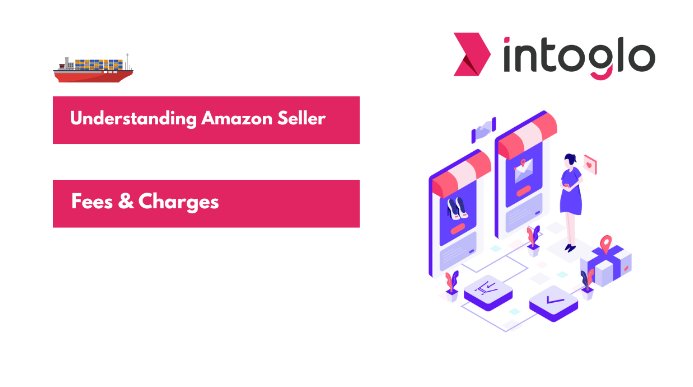
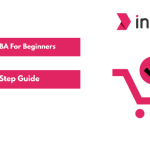
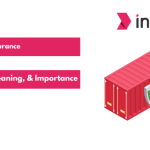
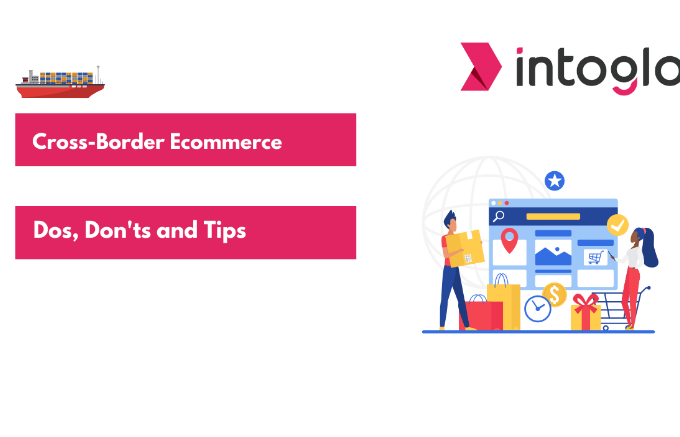
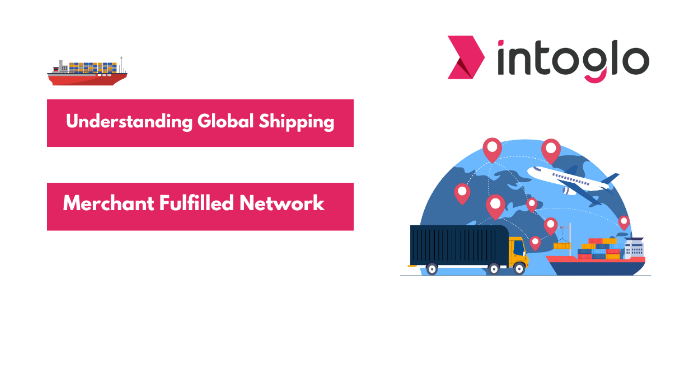
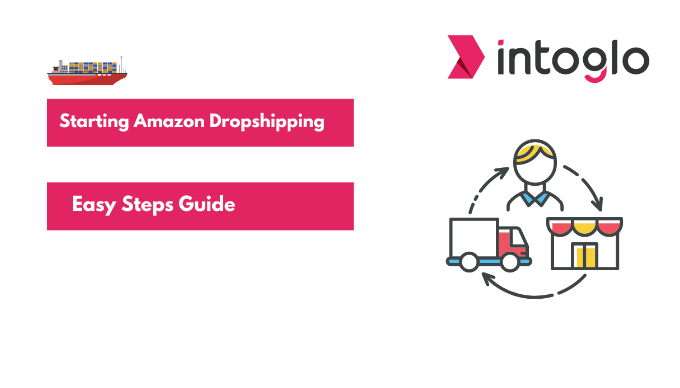
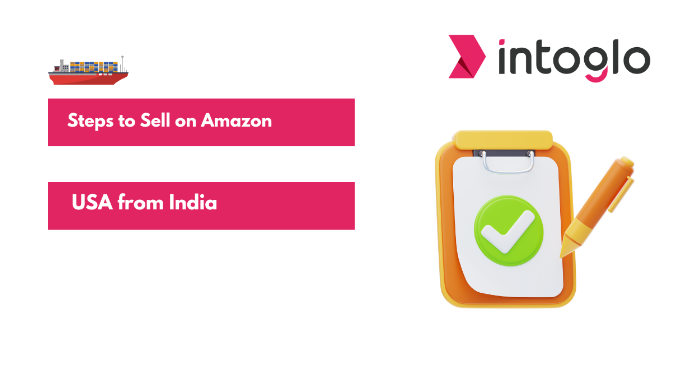
Leave a comment